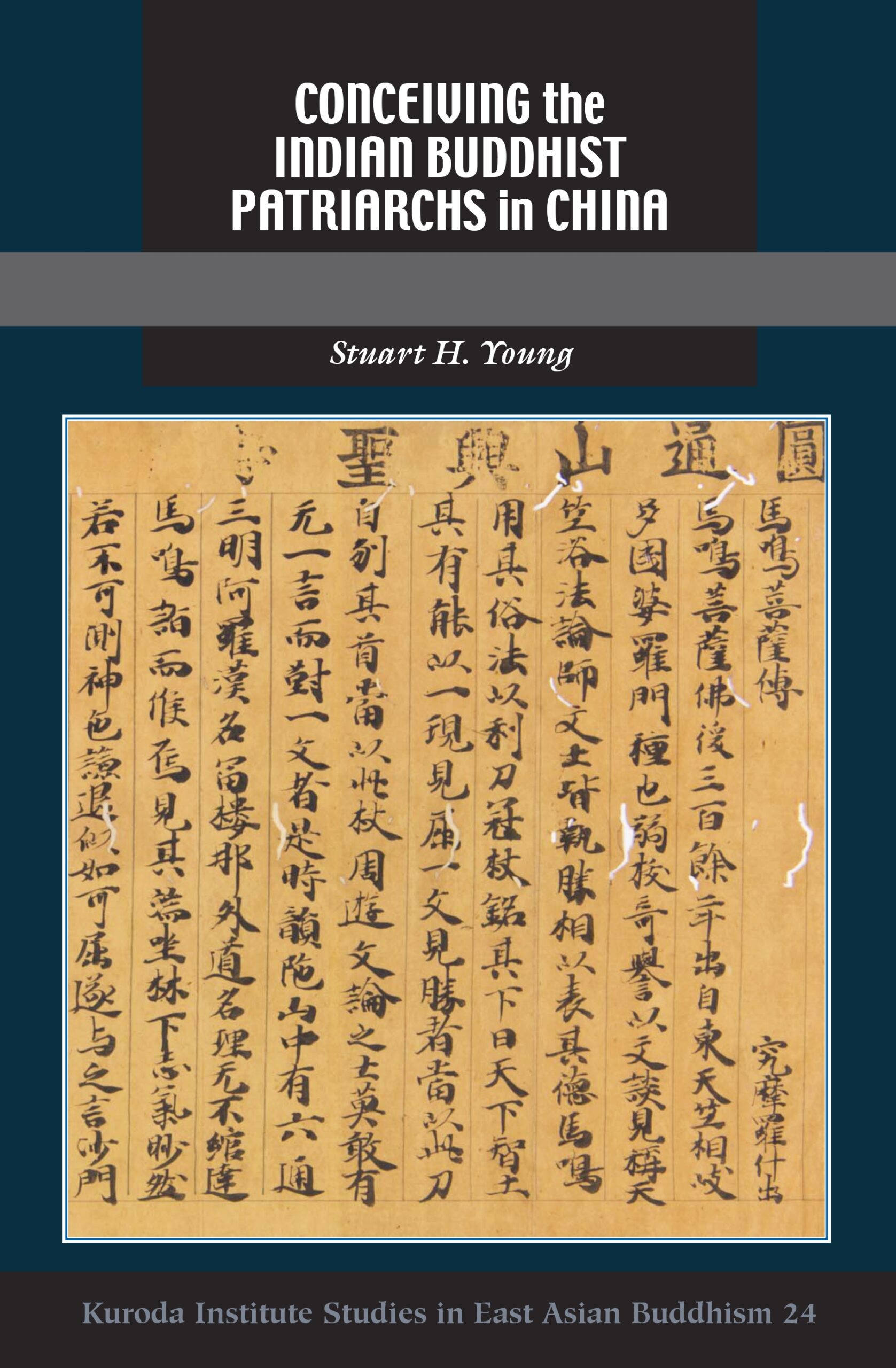Conceiving the Indian Buddhist Patriarchs in China
- About the Book
-
Aśvaghoṣa, Nāgārjuna, and Āryadeva are among the most celebrated Indian patriarchs in Asian Buddhist traditions and modern Buddhist studies scholarship. Scholars agree that all three lived in first- to third-century C.E. India, so most studies have focused on locating them in ancient Indian history, religion, or society. To this end, they have used all available accounts of the Indian patriarchs’ lives—in Sanskrit, Tibetan, various Central Asian languages, and Chinese, produced over more than a millennium—and viewed them as bearing exclusively on ancient India. Of these sources, medieval Chinese hagiographies are by far the earliest and most abundant.
Conceiving the Indian Buddhist Patriarchs in China is the first attempt to situate the medieval Chinese hagiographies of Aśvaghoṣa, Nāgārjuna, and Āryadeva in the context of Chinese religion, culture, and society of the time. It examines these sources not as windows into ancient Indian history but as valuable records of medieval Chinese efforts to define models of Buddhist sanctity. It explores broader questions concerning Chinese conceptions of ancient Indian Buddhism and concerns about being Buddhist in latter-day China. By propagating the tales and texts of Aśvaghoṣa, Nāgārjuna, and Āryadeva, leaders of the Chinese sangha sought to demonstrate that the means and media of Indian Buddhist enlightenment were readily available in China and that local Chinese adepts could thereby rise to the ranks of the most exalted Buddhist saints across the Sino-Indian divide. Chinese authors also aimed to merge their own kingdom with the Buddhist heartland by demonstrating congruency between Indian and Chinese ideals of spiritual attainment. This volume shows, for the first time, how Chinese Buddhists adduced the patriarchs as evidence that Buddhist masters from ancient India had instantiated the same ideals, practices, and powers expected of all Chinese holy beings and that the expressly foreign religion of Buddhism was thus the best means to sainthood and salvation for latter-day China.
Rich in information and details about the inner world of medieval Chinese Buddhists, Conceiving the Indian Buddhist Patriarchs in China will be welcomed by scholars and students in the fields of Buddhist studies, religious studies, and China studies.
- About the Author(s)
-
Stuart H. Young, Author
Stuart H. Young is associate professor of East Asian religions in the Department of Religious Studies at Bucknell University.
- Reviews and Endorsements
-
- . . . this monograph by Stuart H. Young stands out based on the importance of the topic as well as its overall quality. He fills a crucial gap in scholarly studies on Chinese Buddhism. . . . The texts are presented in a philologically sound way (including the Chinese text portions!), with a quality of translations going far beyond the average level usually encountered in the treatment of Chinese Buddhist textual material in Western scholarly publications.
—H-Buddhism - In this volume, Young successfully mines a rich vein of medieval Chinese Buddhist material to deepen our understanding of how “the gap between India and China was both negated and exploited.” He analyzes Chinese Buddhist treatments of three Indian figures–Aśvaghoṣa, Nāgārjuna, and Āryadeva–from their first appearances in Chinese Buddhist literature through to the late Tang dynasty. . . . It is his attention to the dissemination and re-purposing of these figures within Chinese Buddhism that takes him – and us – to a variety of sources heretofore discussed in isolation from each other. That astute choice, bolstered by an impressive bibliographic reach in both primary and secondary sources, has resulted in a very valuable study.
—Studies in Chinese Religions - Stuart H. Young’s Conceiving the Indian Buddhist Patriarchs in China adds a new and hitherto unexplored chapter to the fascinating stories and histories of early Buddhism in China. It opens up new trajectories for the study of a wide range of topics regarding medieval China, not only of Buddhism and religion but also of matters of ethnicity and cultural identity, the Self and the Other. Young successfully breaks free from the one-hundred-year-old dispute about “Sinification of Buddhism” (Kenneth K.S. Ch’en, Peter N. Gregory) versus “Indianization of China” (Hu Shih). He shows the imagery and appropriation of India in early medieval China in religion, philosophy, art, and literature as a conscious and multifaceted process. That process created an entirely new and heightened sense of cultural self-awareness on the side of the Chinese out of the images that were transmitted to China from India over the course of a millennium.
—Monumenta Nipponica - The monograph traverses traditional areas of Buddhological concern for this period: the development of hagiography as a genre; the accumulation of Buddhist systems of thought; the periodization of the dharma; the defense of the sangha vis-à-vis the state; the assemblage of sectarian lineages; and the growth of esoteric Buddhist practice. Overall, Young charts new points of data within these well-established paradigm
—Review of Religion and Chinese Society - Stuart Young’s Conceiving the Indian Buddhist Patriarchs in China is a welcome new addition to the literature, drawing inspiration from Campany to explore how medieval writers made use of Indian patriarchs in their construction of Chinese Buddhism. . . . Stuart Young is to be congratulated for drawing deeply from his own repertoires of theory, philology, and sensitive historiography to present a new and compelling vision of medieval Chinese Buddhism. This volume should be on the bookshelf of any scholar of Chinese religion.
—Journal of Chinese Religions
- . . . this monograph by Stuart H. Young stands out based on the importance of the topic as well as its overall quality. He fills a crucial gap in scholarly studies on Chinese Buddhism. . . . The texts are presented in a philologically sound way (including the Chinese text portions!), with a quality of translations going far beyond the average level usually encountered in the treatment of Chinese Buddhist textual material in Western scholarly publications.
- Supporting Resources
-





